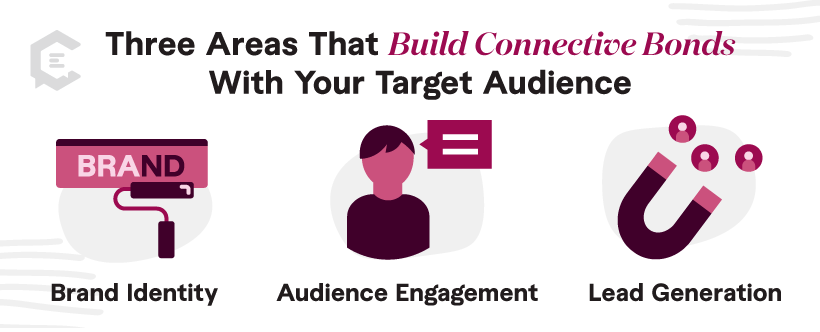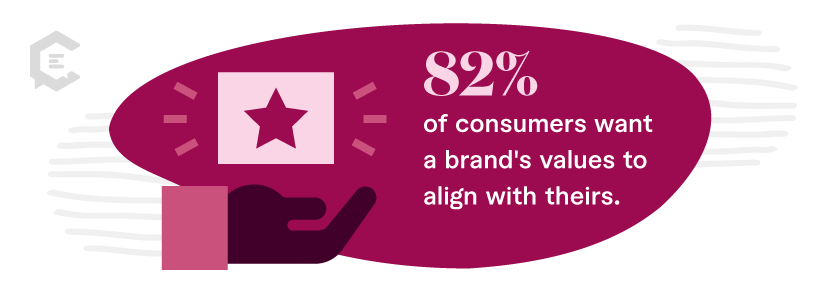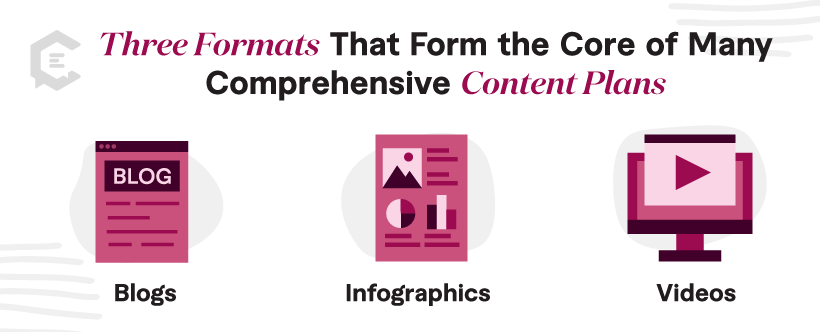An effective content strategy ensures you provide unique value to your target audience and stay ahead of the curve. But how exactly does a content strategy translate into that competitive advantage? Let’s dive in and see how it gives you that critical edge over the competition.
Understanding Competitive Advantage
Before we delve into the nitty-gritty of content strategy, it’s important to grasp the concept of competitive advantage. Competitive advantage comprises the distinct qualities a company uses to outperform its competitors.
One of the main ways to achieve this advantage is by developing exceptional content. High-quality content captivates your audience while highlighting your brand’s expertise and communicating your value to potential customers. Raising the bar of your content can set you apart from the rest of your industry.
Developing Your Content into Your Competitive Advantage
Each blog post, infographic, video, or social media update is an opportunity to showcase your brand. They are your way to communicate your brand’s personality, expertise, and unique value proposition. And they all work together to distinguish your brand from competitors vying for the same digital space.
You forge powerful bonds with your target audience when you consistently establish your brand as a thought leader in your industry. Connective bonds are built in three areas:
- Brand Identity
- Audience Engagement
- Lead Generation
Building Brand Identity
Brand identity is essential to establishing an emotional relationship with your target audience. It communicates what you stand for, what you promise, and what you deliver. And showcasing your brand’s values is one of the most important aspects of gaining a competitive advantage because:
- 82 percent of consumers want a brand’s values to align with theirs
- 75 percent of consumers would part ways with a brand over conflicting values
Source: HubSpot
Define your brand identity and mission and ensure all your content aligns with that identity and helps carve out your niche in the market.
Audience Engagement and Loyalty
The consumer journey isn’t usually a straight line that starts and ends with one interaction. Content marketing nurtures relationships. By delivering consistently valuable content, you maintain that competitive advantage and keep your audience returning for more. That builds trust and loyalty over time. Before you know it, casual consumers become loyal, long-term customers that spread positive word of mouth and boost your brand’s reputation. A referral by someone you trust can be one of the most powerful deciding factors when choosing a brand.
Lead Generation and Conversion
Informative, high-quality content answers potential customers’ questions and addresses their pain points. This type of content generates warm leads for your sales team.
But well-crafted content doesn’t stop at lead generation. It continues to engage with prospects throughout the sales funnel, guiding them toward conversion. Take that competitive advantage even further through content personalization, tailoring your message to individual customer groups based on their interests, behaviors, and needs.
Components of an Effective Content Strategy
Creating a high-level content strategy is akin to setting a roadmap for your brand’s journey toward success. Every step plays a crucial role in attracting and engaging your target audience. Those steps include everything from choosing the right content format to promoting your content. But it all begins with understanding your audience.
Audience Development
With your audience top of mind, create content to address their needs, solve their problems, and offer valuable insights. Achieving that connection requires a deep understanding of your audience, and you need to know what they want and how your brand can fulfill their needs.
Buyer Personas
Buyer personas are semi-fictional representations of your ideal customers, pieced together through market research and real data about your existing customers. These personas include information about demographics, behavior patterns, motivations, goals, and challenges.
For example, you might have a persona called “Marketing Mary,” a mid-level marketing director who’s tech-savvy, driven by data, and constantly looking for innovative strategies to outperform her competitors. By creating content tailored to the needs and interests of your personas, you can ensure that your message hits the mark every time.
Audience Segmentation
Audience segmentation takes your understanding of your audience a step further. Divide your audience into smaller groups based on specific criteria. This can include demographics, geographic location, buying behavior, or interests.
That segmentation enables the creation of personalized content that speaks directly to each group’s unique needs and preferences. For example, you might create a series of blog posts about advanced SEO tactics for a segment of marketing professionals.
For a segment new to the field, you might create beginner-friendly content that introduces the basics of digital marketing. Doing this ensures you cover the entire range of your audience with relevant and valuable content. That personalization makes them feel uniquely seen, solidifying their connection to your brand.
Choosing the Right Content Format
Formats range from blogs and articles to infographics, videos, podcasts, and webinars. The type you use directly influences your brand’s effectiveness and audience engagement levels. The question to ask yourself: Which format most effectively conveys your message while also aligning with your audience’s consumption patterns?
These three formats form the core of many comprehensive content plans:
- Blogs: Blog posts are the bread and butter of the content world. They provide a strong foundation for any content marketing strategy. A great blog post boosts SEO while positioning your brand as a thought leader in your industry. They can also increase sales and conversions.
- Infographics: Infographics are visuals designed to simplify complex information into an easily digestible format. They combine data and graphic design to tell the audience a visually compelling story. And they are super versatile, working across all types of platforms.
- Videos: Video content dominates the digital marketing world. 91 percent of businesses use it as a marketing tool. Video is one of the best ways to channel your brand’s messaging into a visual story that emotionally resonates with your target audience.
Promoting Your Content
Promoting your content is about understanding your audience. You need to know where they are, what they’re looking for, and how they prefer to consume content. But it can feel hard to ensure your content isn’t lost in the vast digital landscape.
That’s where the two-pronged approach of SEO strategies and social media sharing can work wonders. Both boost your visibility and expand your audience.
SEO Strategies
93 percent of web searches start on a search engine. SEO strategies are crucial to improving your brand’s visibility and bolstering its authority.
SEO strategies include:
- Targeted keyword research and optimization
- On-page SEO
- Link building
- SEO outsourcing
Above all, it’s about delivering high-quality, value-packed content that meets your audience’s needs and search intent.
Social Media Sharing
The average person spends 2 hours and 31 minutes a day on social media. And Social media is the #1 way to reach Gen Z consumers. Social media sharing directly engages with consumers and gets you immediate feedback on your content strategy’s impact. You can then take that feedback and refine your content marketing strategy in real time.
Measuring Success in Content Marketing
Regularly analyzing metrics allows you to fine-tune your strategy. For example, if your content drives high traffic but lacks conversions, it’s time to reassess your approach and make some tweaks.
That analysis is done through key performance indicators (KPIs) that will help you track and gauge your content’s performance over time. Let’s discuss three metric categories — traffic, engagement, and conversion.
- Traffic Metrics: Are you attracting a growing audience? Which content pieces are the most popular? Where do your visitors come from? The answers to these questions can help refine and optimize your content strategy. They can also help you make informed decisions about future content creation.
- Engagement Metrics: Do visitors spend time on your site or leave quickly? Are they browsing through multiple pages? Are they interacting with your content on social media? Answering these questions can help you identify what’s keeping people’s attention and what needs tweaking.
- Conversion Metrics: Conversion metrics indicate whether your content drives profitable customer action. They help you understand if your content is entertaining your audience or moving them further down the sales funnel. In essence, conversion metrics help you measure the ROI of your content marketing efforts.
Case Studies: Successful Content Strategy in Action
Let’s explore two competitive advantage case studies from industry giants: Coca-Cola and Airbnb. Both these companies have harnessed the power of content marketing in their own unique way. And that has led them to massive success in the digital space.
Coca-Cola: A Storytelling At Its Best
Coca-Cola’s “Share a Coke” campaign transformed a simple drink into a medium for connection and shared experiences. How did they do it? By replacing their logo with the most popular names around the world. That simple decision showed how effective it can be when you tell a story that resonates with an audience on a personal level. Customers flooded social media platforms as they found shared images of their personalized Coke bottles.
AirBnb: Leveraging User-Generated Content
Airbnb’s standout “Live There” campaign encouraged users to “live like a local” during their travels. They used Instagram to feature stunning images of Airbnb listings shared by users, along with their stories. This strategy created a visually appealing feed and fostered a sense of community among Airbnb users. Their content strategy shows that when customers feel valued and part of a community, they are more likely to engage with and promote a brand.
Both of these case studies highlight the importance of content marketing strategy. They aligned their strategy with their brand’s values and audience’s needs and interests. That gave them a massive competitive advantage. Their example shows that when you create content that is engaging, personal, and authentic, it can skyrocket your brand’s reach and impact.
Next Steps Toward Your Content-Driven Competitive Advantage
Exceptional and unique content is a game-changer for businesses seeking a competitive advantage in their market. But remember, like any journey, building a successful content strategy doesn’t happen overnight. With the right team around you, you can create content that drives business results and builds a loyal and passionate community around your brand.
If you need any help that’s where ClearVoice can come in. Our in-house teams and freelance network of thousands of writers, producers, and creators work together to create top-level content for all your content marketing needs. Connect with us today to take your brand’s content creation strategy to the next level.








